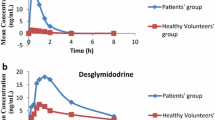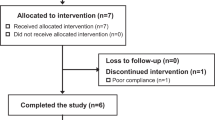Abstract
Objectives: To assess the effect of moderate or severe liver dysfunction on the pharmacokinetics of γ-hydroxybutyric acid (GHB).
Methods:
The absorption and disposition kinetics of GHB were studied in eight cirrhotic patients without ascites (Child’s class A) and eight cirrhotic patients with ascites (Child’s class C), after administration of a single oral dose of 25 mg⋅kg−1. The liver metabolic function of each patient was evaluated by measuring antipyrine clearance and the formation rate of the lidocaine metabolite monoethylglycinexylidide (MEGX).
Results:
Compared to those previously determined in eight healthy control subjects given the same GHB dose, mean AUC values were double or greater in the cirrhotic patients. Accordingly, apparent oral clearance was markedly reduced (from 9.1 to 4.5 and 4.1 ml⋅min−1⋅kg−1 in nonascitic and ascitic patients, respectively). Terminal half-life (t1/2), was significantly longer in nonascitic patients than in control subjects (32 vs 22 min). A further significant prolongation of t1/2, most likely due to an increased distribution volume, was observed in patients with ascites (56 min). Nonetheless, GHB plasma concentrations fell to either undetectable or negligible levels by the end of the usual dosing intervals (6–8 h).
More limited changes were noted in the absorption parameters. The peak level (Cmax) increased only in nonascitic patients, but not proportionally to the increase in AUC. The time to Cmax increased from 30 to 45 min in both cirrhotic groups. These findings are consistent with a slowed rate of GHB absorption in cirrhotic patients. Adverse effects were similar, for intensity and duration, to those recorded in healthy volunteers, i.e., mild and transient.
Conclusions:
Although liver cirrhosis causes significant modifications of GHB disposition kinetics, the increase in t1/2 is not such as to cause drug accumulation on repetitive dosing. However, in consideration of the higher mean plasma levels observed in cirrhotic patients, it appears wise to keep the initial GHB daily dose at the lower end of the therapeutic range and to carefully monitor the patients if upward dose adjustments are required.
Similar content being viewed by others
Author information
Authors and Affiliations
Additional information
Received: 27 July 1995/Accepted in revised form: 24 November 1995
Rights and permissions
About this article
Cite this article
Ferrara, S., Tedeschi, L., Frison, G. et al. Effect of moderate or severe liver dysfunction on the pharmacokinetics of γ-hydroxybutyric acid. E J Clin Pharmacol 50, 305–310 (1996). https://doi.org/10.1007/s002280050113
Issue Date:
DOI: https://doi.org/10.1007/s002280050113




